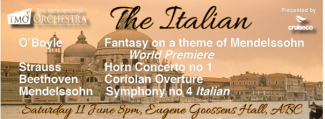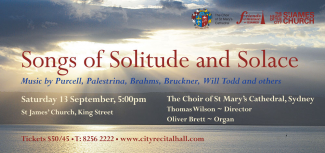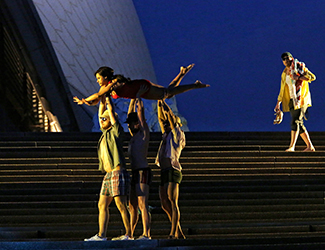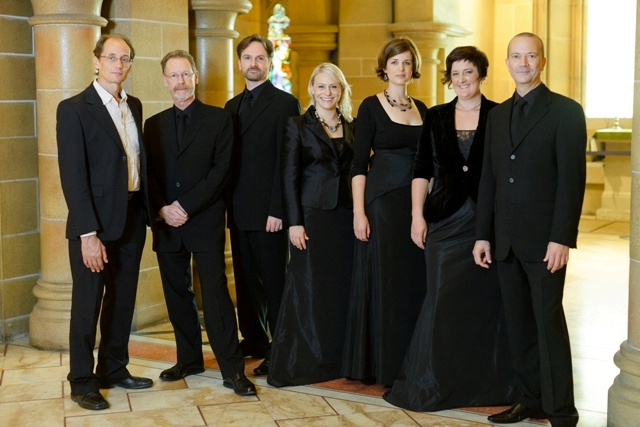Concert Review: The Italian/ The Metropolitan Orchestra
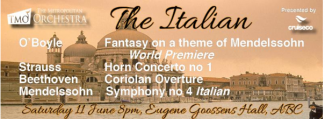
‘The Italian’/ The Metropolitan Orchestra (TMO)/ Michael Wray, principal horn/Sarah-Grace Williams, conductor
Eugene Goossens Hall, ABC Centre, Ultimo
11 June 2016
Written by Ria Andriani
The third concert in The Metropolitan Orchestra (TMO) Met series continued last weekend in the tradition of presenting excellent performances to a full house. Under the baton of conductor Sarah-Grace Williams, the orchestra performed to its full strength and potential. Although the title of this concert was The Italian, the programme was dominated by German composers.
The concert opened with a world premiere by Australian-born composer Sean O’Boyle: Fantasy on a Theme of Mendelssohn which was commissioned by Sarah-Grace Williams for TMO. Composed within a week in March, it was a passionate piece which began with a majestic opening involving the whole orchestra and an especially notable playful clarinet. O’Boyle has a way of composing that is lyrical, yet reaching far beyond the harmonic language of the 19th century composers whom he was quoting. He used consonant triads sparingly, and when they did appear, they were a welcome point of the performance. This was in contrast to the original theme, played beautifully by the flute a little way into the piece. The music had a cinematic feel, changing rapidly from mood to mood. It alternated between full orchestral force and individual players, usually reiterating the theme and making much of the major sixth interval. O’Boyle’s own theme which was more fanfare-like was reminiscent of Brahms. It was the work of a skilled composer, constant in its own style whilst acknowledging others in a delightful way.
The best item of the evening’s programme was Richard Strauss’ Horn Concerto No. 1 in E-flat, Op. 11. Featuring Michael Wray, TMO’s very own principal horn player, the horn quickly made its appearance, starting with a hunting call. The whole orchestra supported with sensitivity whilst Wray showcased his virtuosic power. The lower strings accompanied him throughout and were especially strong in the tutti sections. Composed when Strauss was just eighteen, he intended his father, who was principal horn of the Munich Court Orchestra, to perform the premiere. The difficulty of the work caused him to pass on the ‘honour’ to his friend Gustav Leinhos. Wray did extremely well, meeting the technical demands of the faster passages. His legato phrases were expressive and executed with great sensitivity. There was tremendous dialogue between the horn and upper wind sections.
The orchestra as a whole, was secure in its role as an accompanist, partner or as a chorus, supporting the horn as the it merged with the ensemble and dying down to make way again for the solo passages. The piece showed the orchestra at its best with good dynamic control and the tightness as an ensemble.
After the interval, the orchestra launched into Beethoven’s Coriolan Overture, demonstrating fine dynamic and harmonic tension. The final item of the evening was Mendelssohn’s Italian Symphony no.4. Though this gave the concert its title, it is unmistakably German in style. Mendelssohn used major and minor keys to establish the atmosphere of the piece. The marching feeling was most obvious in the strings, occasionally taken up by other sections. The second movement of the piece, which was taken from a Neapolitan religious march, displayed a very Germanic style as the instruments played in unison and in four-part harmony reminiscent of a Bach chorale. The impression was enhanced further by the continuo-like passages of the celli. Surprisingly, Mendelssohn quoted his own beautiful setting of Ave Maria in this movement.
The third movement was the busiest, starting with angular string phrases and a trio of wind instruments. It continued with the chant-like trumpets and more melodic strings against falling descending pattern held by the woodwind instruments. The whole section felt quite military, yet so contrasted by the gentle upper wind instruments. The fourth movement recalled O’Boyle’s piece in its rapid changes of themes and mood. In a minor key, yet filled with lively notes, the texture was very dense, engaging the whole orchestra. It was a good point to end the concert.
With a line-up of renowned orchestral music in its upcoming concerts, such as Schubert’s Symphony no.9, The Great and Beethoven’s Violin Concerto with violinist Glenn Christensen from the Australian Chamber Orchestra, TMO is a popular choice of concert-going Sydneysiders.
SoundsLikeSydney©
Ria Andriani graduated with Bachelor of Music/Bachelor of Arts from UNSW in 2015. She now sings as a soprano with various choirs in Sydney, and presents recitals in collaboration with other musicians. Follow Ria on www.facebook.com/RiaAndrianiSoprano

